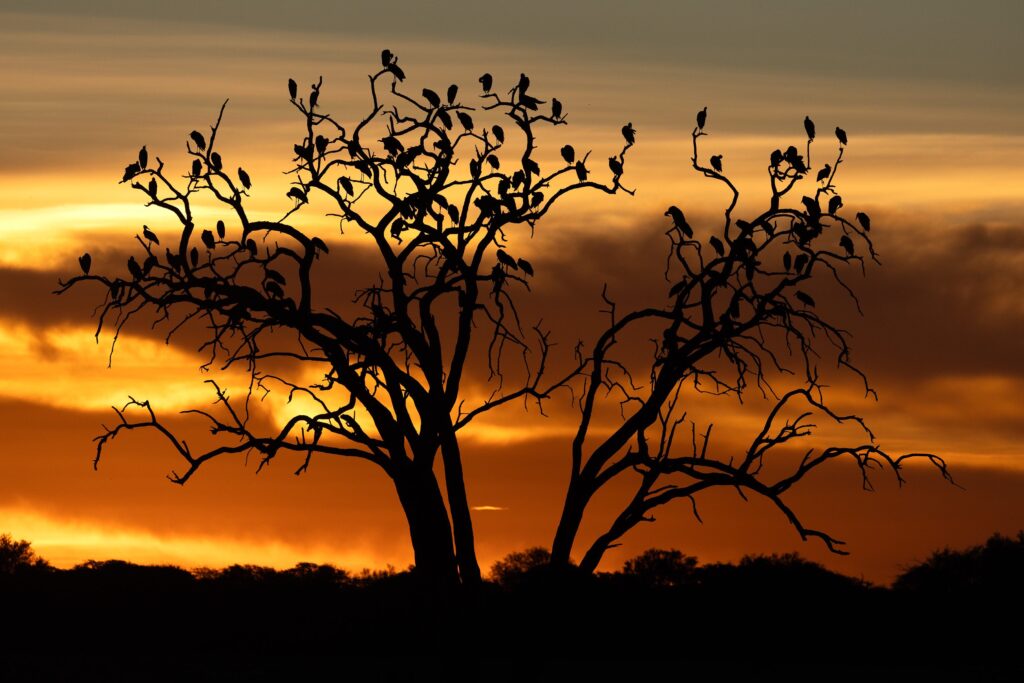Greetings and compliments of the New Year to you.
After the long, hot, dry months of searing heat, the Park is heaving a tentative sigh of relief, and starting to come alive again as the rains begin to fall, albeit scantily and scattered. The pumped pans that were taking huge strain a few weeks ago, are on the way to being replenished now that there is no pressure from enormous herds of elephant. Natural pans too are beginning to fill, many of which have white frothy blobs of frog spawn hanging over the water. If big enough, there’s a waterbird or two dabbling about and some sport common vlei crinum (Crinum macowanii) with their long tubular pink or white flowers.
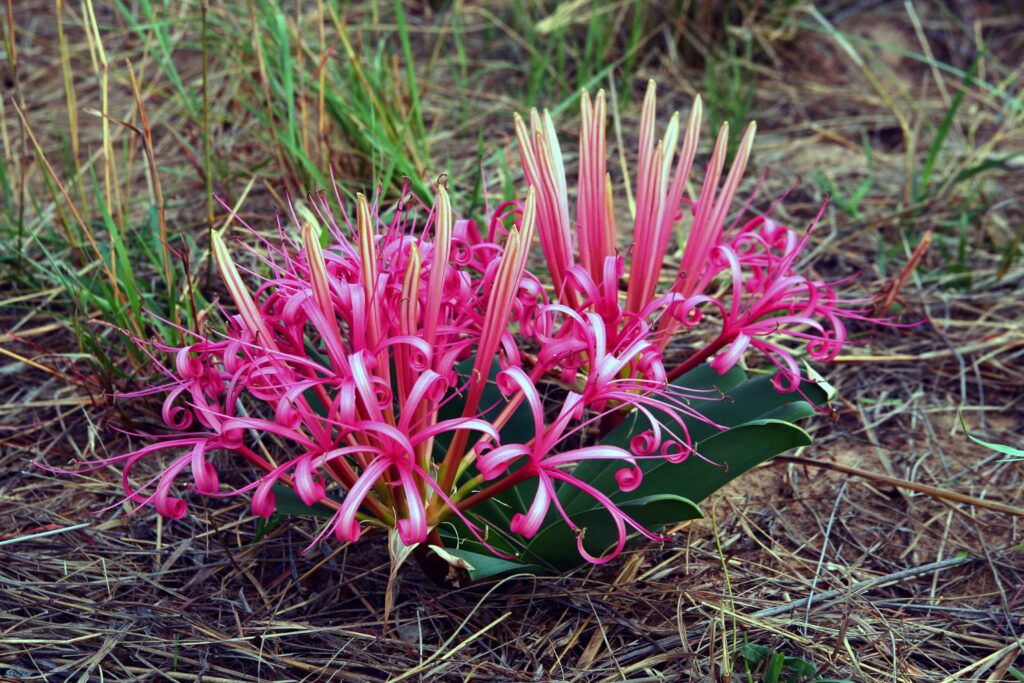
Vleis are greening up, scattered here and there with bunches of Southern Ammocharis (Ammocharis coranica), their strap-like curved leaves and pompoms of pink flowers adding a splash of colour. Clumps of common fireballs (Haemanthus multiflorus) blazing their vermillion balls of fire, brighten up several secluded spots. Flame lilies (Gloriosa superba) are not much in evidence yet although we did manage to find one!
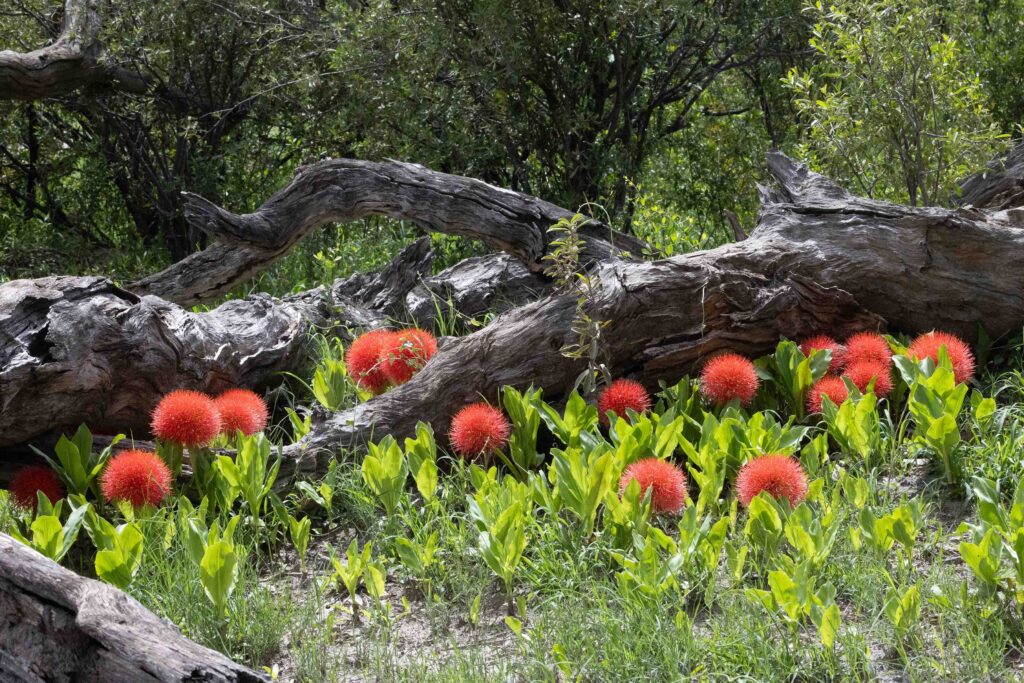
Scattered in bush along the way were small white bauhinia flowers (Bauhinia macranthus) like snagged bits of white rag, while in drier, open areas the creeping bauhinia (Tylosema fassoglensis) made a show of bright yellow flowers trailing along in patches of brilliant green. Also creeping onto the sides of the road and littering the veld was the pinky mauve of stud thorns flowering (Dicerocaryum zanguebarium). Here and there the wild pimpernel (Wormskioldia longepedunculata) popped up their bold orange heads. There were several patches of massed cork bush (Mundulea sericea), brightening up the bush, the delicate purple flowers profuse amongst the foliage.
Most spectacular of all, was a very brief flowering of the Zambesi gold (Rhigozum zambesiacum). On a morning drive from Makwa to Kennedy 1, their stunning bright yellow flowers adorned masses of bushes making for a breathtaking display. The flowers last for a couple of hours only, and on the afternoon return journey just a few bushes here and there were dotted with a yellow flower or two – an astounding phenomenon! The tree lines along the vleis and along some of the roads were in full leaf of every hue of green imaginable, a few rusty reds, burnished coppers, unpolished brass, and a splash of old gold.

Dark humps of desiccated hide and bone lay about in many places around the park, testament to the elephants that did not make it through the intense heat and dry due to the late onset of the rains, this being particularly evident at Masuma Dam in the north. Observers having counted 1840 elephant drinking at Masuma during the annual 24-hour game count earlier in the year, it was no wonder the water pumps struggled to keep up with supply. Arriving at Masuma to see vegetation sprouting vigorously was a delight, as were new swathes of bright green grass in what had previously looked like a lunar landscape. The Dam that had been all but empty was well on the way to filling up and during a morning’s rain, the inlet to the left side of the platform began running into the pan. Swirls from numerous barbel could be seen moving upstream into the shallows while three of the five large crocs stalked them patiently, hoping for a lucky snap at a fish.
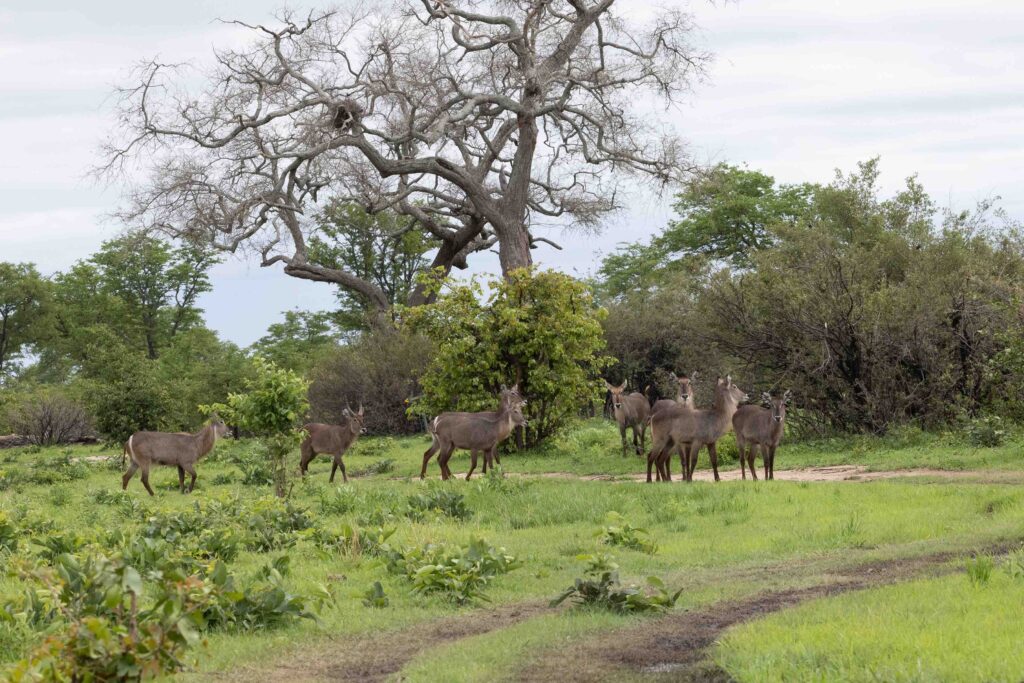
On our first visit to the pan, there were over thirty hippos, defaecating copiously, grunting noisily with great wide gapes yawning in a display of dominance as they jostled for their patch of the pond. On subsequent visits there seemed to be a few less as some had given up the unequal struggle, taking themselves off to somewhere more peaceful. A water monitor sidled along the edge of the pan setting off the Water Thick-knees and upsetting the fossicking Wood Sandpipers and Three-banded Plovers.
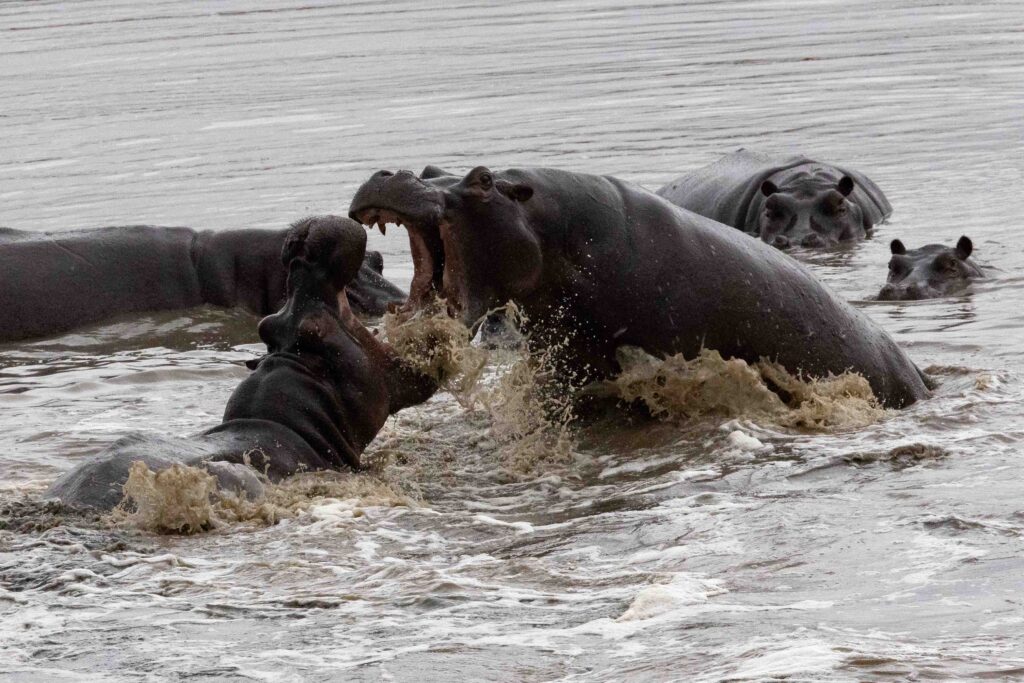
A herd of about forty impala rams were snorting and cavorting, tails up and horns clonking as they tested their mettle before dashing around like dervishes, showing off. On the far side of the pan a large herd of impala does, with their newborn lambs gathered in a little nursery, rested quietly in the green until later in the afternoon when there was much bounding about in circles as the babies exhilarated in their evening exercise dash. Waterbuck were round and about, teaming up with some of the impala herds overnight, lying together comfortably ruminating.
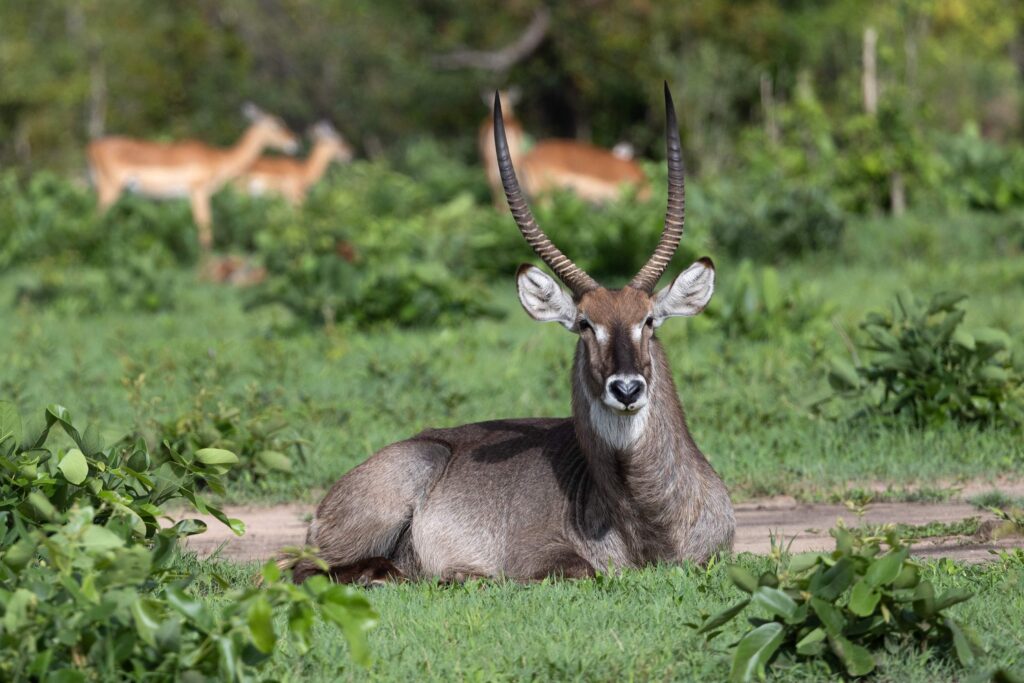
Each day brought increased numbers of tiny, dainty, long-legged impala fawns. Only three elephants were seen while staying at Kapula with two stately old gents meandering out of the trees in front of the platform into the late afternoon sunshine to amble down the vlei in front of the tents. Lion were heard roaring every night, one of which passed very close by, but it was too dark and late to investigate. A small crowd of dwarf mongooses, living in an anthill in front of the platform, emerged every so often to entertain, their bright little eyes and twitching noses looking curiously at us as they went about their business.

Taking advantage of a green-season special at Little Makalolo further to the south, much time was spent at the Ngamo Plains. Having done the annual game count there when it was so dry and barren with a distinct lack of wildlife, the Plains, beginning to green up, were teeming with game – impala and wildebeest herds dropping their gangly calves, a large herd of eland, numerous zebra families, waterbuck, kudu, giraffe, and plenty of predators were active in the area. Two cheetah brothers lay grooming each other, hardly able to move with bellies full of a recent kill.

A lioness, that we’d seen on her own the day before guarding a wildebeest carcass, was gazing balefully at a large male lion that was dominating the remains of her kill, while a few black-backed jackal and a group of vultures crept ever closer hoping for a morsel.
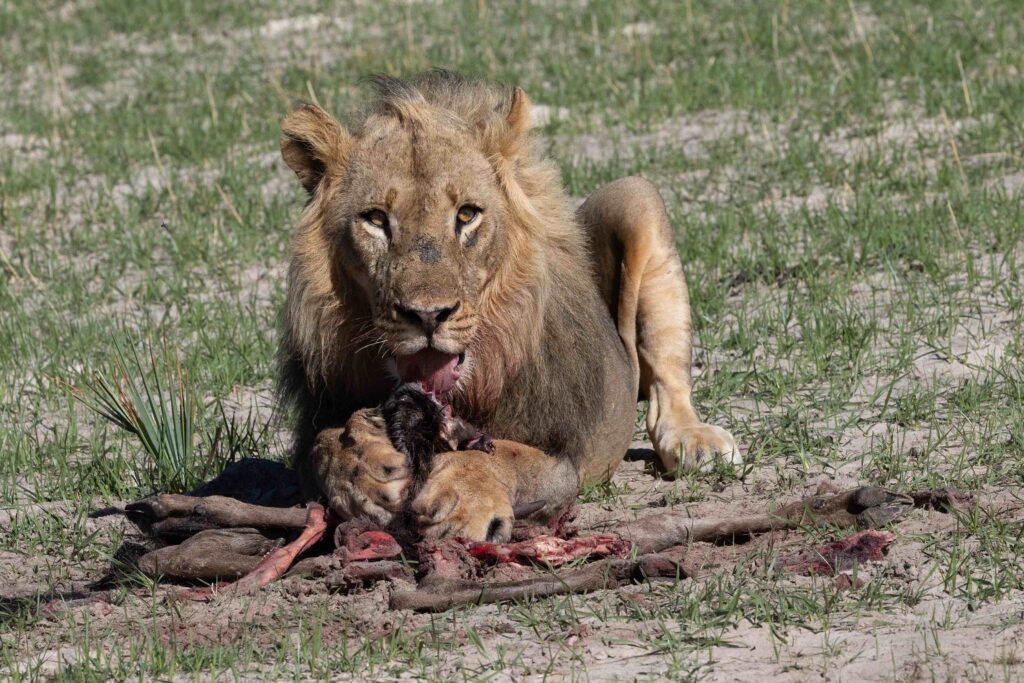
There was a pack of painted dogs in the area, and we came across fourteen pretty canines splashing through a small pan before disappearing off to hunt, panicking a herd of impala that exploded out of the bush, racing in different directions. A remarkable number of tortoises were seen plodding along and plenty of flooded dips in the road had a terrapin or two scuttling out of the way of the wheels. A lovely herd of sable antelope was seen near Scotts Pan on a peaceful morning drive.

Birding in the “green season” is always fantastic with a staggering number of migrants having arrived. A superabundance of Kites, Lesser Spotted Eagles, Common Buzzards, Amur Falcons, Swifts, and Swallows flew about in their thousands reveling in the alate hatchings. Hundreds of Carmine and European Bee-eaters along with their smaller cousins, hawked insects continuously.

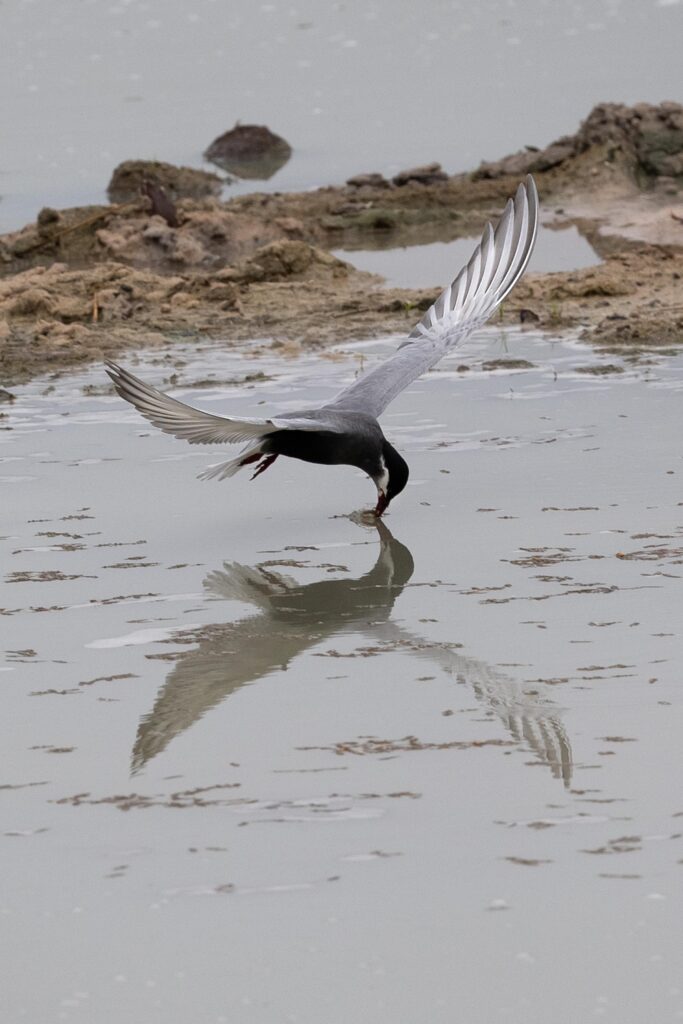
Various species of vultures were having a field day cleaning up predator kills and an abundance of Grey Crowned Cranes and masses of Storks of all description sauntered about feeding. The pans were alive with waterbirds and even some of the little puddles along the road accommodated a paddling duck or two. In camp at Kapula, a couple of Red-billed Hornbills kept us entertained by flipping flying ants down their throats competing with a few Cape Glossy Starlings for this bounty. Resident Red-billed Spurfowls sauntered around the camp, happily strolling through legs and feet if necessary.
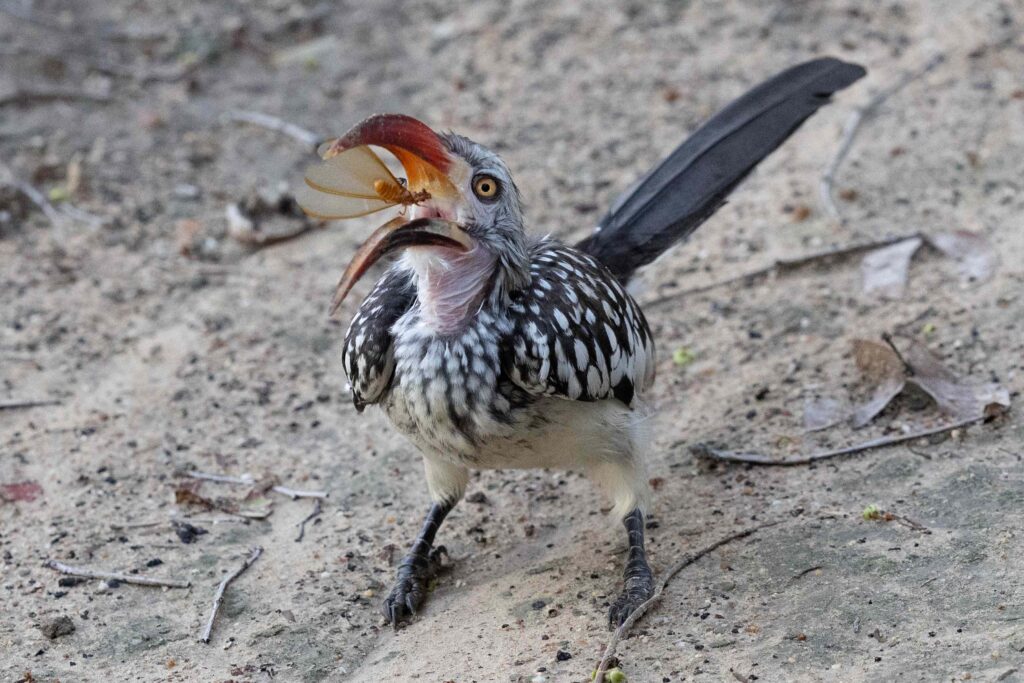
There was hardly any need for the five o’clock reveille as the Spurfowl in camp did a sterling job of that usually starting their raucous noise at around four in the morning. The most exciting bird sighting was fourteen Greater Flamingos at Masuma. The sighting was brief as a couple of noisy Egyptian Geese tried to chase them off, causing them to lift briefly, showing their startling bright pink and black wings, before disappearing into a deep depression, with their heads bobbing up now and again.
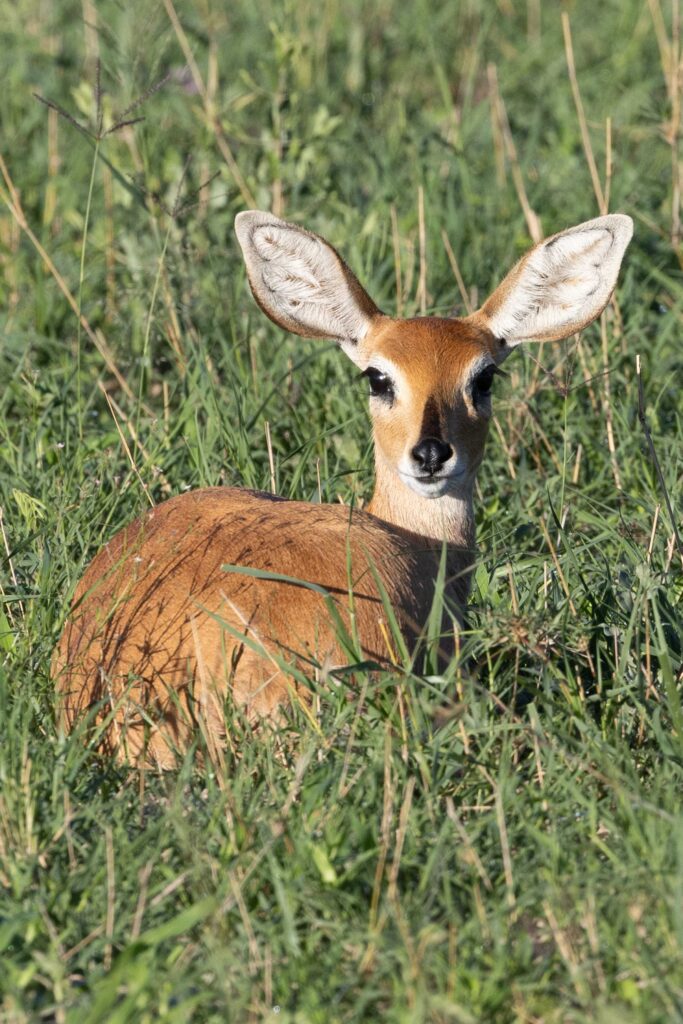
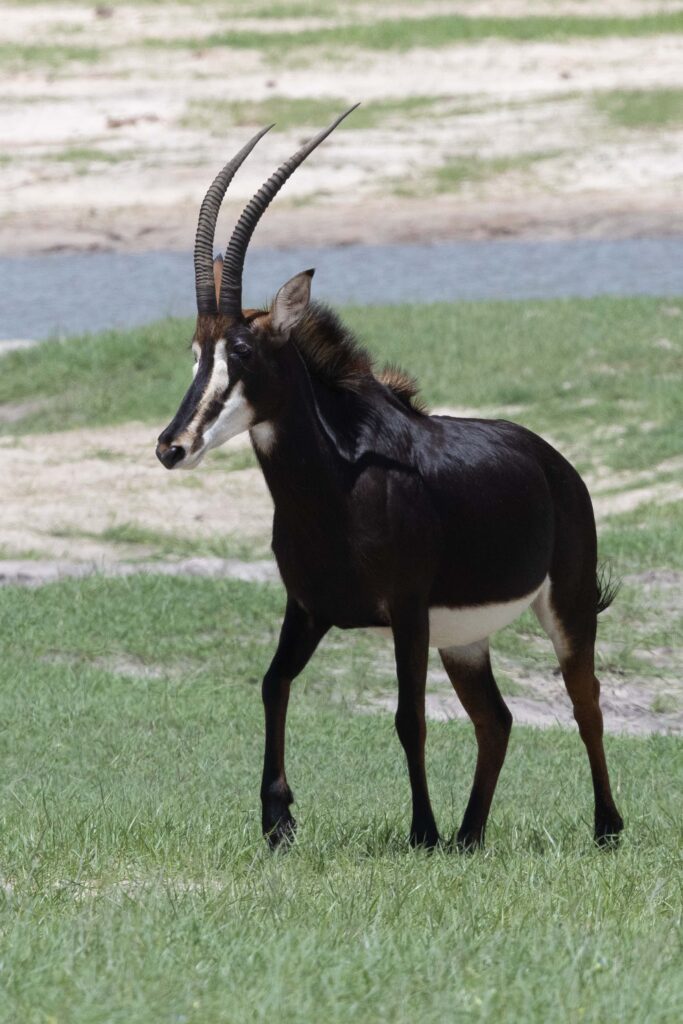
It was a wonderful trip and lovely to see the park coming alive again. While the ellies have disappeared for now, the rest of the wildlife is in splendid condition with bright eyes, glossy coats, and full bellies. The relief may be short lived as the long-range forecast for rain is not looking too hopeful. For now, the annual transition from barren desert to Garden of Eden is truly magical.
Jenny Brebner.
Photo credits Dave Dell
